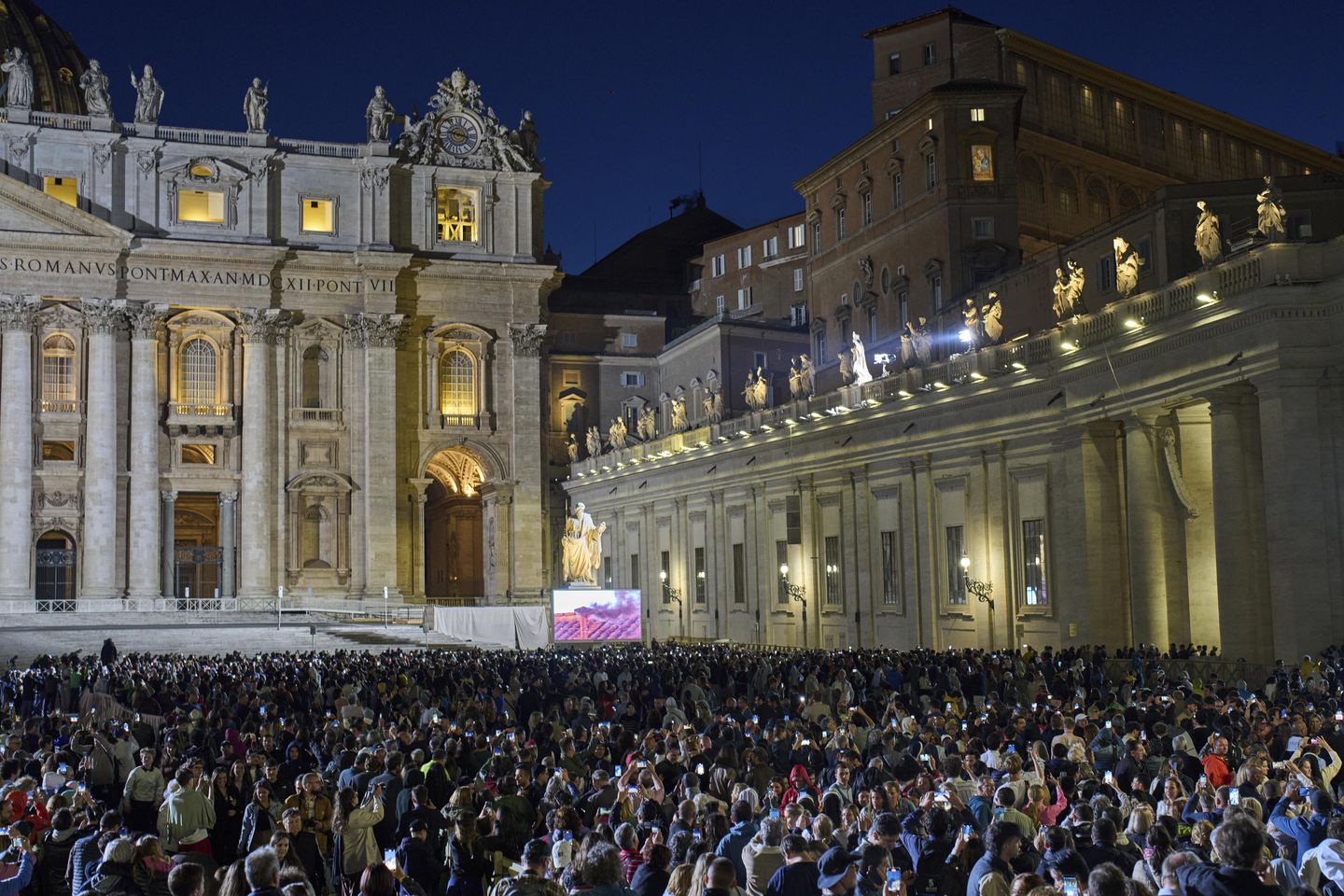
VATICAN CITY — Cardinals on Wednesday began the tradition-laden process of picking the Catholic Church’s next pontiff amid intense security and even more intense speculation about who might be able to unite the church’s increasingly polarized 1.4 billion believers.
Black smoke billowed from the chimney of the Sistine Chapel at precisely 9 p.m. local time, the Vatican’s code that none of the 133 cardinals from 70 countries garnered the two-thirds majority required to become the next pontiff.
Despite that highly expected outcome, the first signal from the cardinals cloistered in the historic chapel was greeted with gasps and then waves of applause and cheers outside.
Right up until the moment the Sistine Chapel’s doors closed behind the cardinals earlier in the day, speculation was ripe about who could be named the 267th occupant of the Throne of St. Peter. Will cardinals select another progressive-minded cleric, like Pope Francis, or more of a traditionalist in the mold of Francis’ predecessor, Pope Benedict XVI?
Questions about the direction of the faith intensified under Pope Francis, who ushered in changes in the way the church discussed polarizing issues such as same-sex marriage, the plight of refugees and the role of women in the Catholic hierarchy.
Multiple insiders told The Washington Times that several U.S. religious groups, mainly from the conservative side of the spectrum, sent representatives to Rome in the lead-up to the conclave to, as conservative Catholic writer Philip Lawler said, “ensure that the cardinals understand their concerns.”
Canadian Cardinal Michael Czerny, a Jesuit like Pope Francis, told The Times that he hoped cardinals would put aside political factors and “vote as their prayers and their conscience direct them … [and to] choose someone for the good of the church.”
German Cardinal Gerhard Mueller, a leading conservative considered to have a chance to be the next pontiff, told reporters before the conclave that he thought cardinals would find a figure who “would unite the church under its historic, traditional values.”
Cardinals will vote up to four times daily starting Thursday, twice before lunch, twice after, until a consensus emerges.
Few Vatican watchers or pilgrims gathered in St. Peter’s Square expected a quick decision. The last time a pope was elected on the first ballot was in 1503. However, anticipation at the Vatican was high before the black smoke appeared. The crowd was a mix of tourists, locals and devout religious groups.
Conclaves are rare. This is the third since the election of Pope John Paul II in 1978.
“I got goosebumps watching the smoke; it’s like something from a movie,” said Amy Kreese, a 57-year-old school worker in Charlotte, North Carolina, who traveled to Rome with her family. Ms. Kreese said she had booked a Sistine Chapel tour for Saturday, but it was canceled because of preparations for the conclave. “I’m disappointed not to see the Sistine Chapel, but how many people can say their tour was canceled because of a conclave?”
Jose Manuel Trinidad, 37, a Miami banker, changed his tour plans in Venice to be in Rome for the start of the conclave.
“I grew up Catholic, and so I couldn’t pass up an opportunity to be in St. Peter’s Square,” Mr. Trinidad said. “Hopefully, they’ll pick the new pope before Friday so I can be here to see him in person.”
Ms. Kreese, Mr. Trinidad and everyone were subjected to tight security to enter St. Peter’s Square.
For days, Rome has been under a kind of lockdown, with about 4,500 armed security personnel stationed around the city. Many were stationed at the Vatican on Wednesday, with security checkpoints and plainclothes officers in the crowds.
The Vatican also deployed officers armed with special futuristic devices capable of jamming drones that tourists or media might try to fly over the square.
Italian news reports said at least two drones were brought down in late April, around the time of Francis’ funeral.
The secretive, centuries-old conclave process for the record-setting number of cardinals was also updated for modern security. A wooden floor was built in the Sistine Chapel to facilitate surveillance-blocking technology, and the chapel was meticulously swept for hidden microphones.
Cardinals were required to take an individual oath of “secrecy and fidelity” that carried the threat of excommunication if broken. They were searched individually for anything that could record the proceedings, not just smartphones or digital recorders but also notepads and pencils. Only religious and personal items such as toiletries and medications are permitted.
“A conclave in 2025 represents a fascinating mix between old and new,” Alistair Sear, a retired Church historian, told The Washington Times. “Ancient traditions like using the smoke to indicate the outcome of the vote, or handwritten ballots, are still used. But so are high-tech jamming devices.”
Historically, conclaves vary greatly in length. There was a three-year conclave in the 13th century, and in 1503, it lasted just a few hours. It would be necessary to go back to 1958 to find a conclave that lasted more than eight votes, suggesting this one may be resolved in a few days.












